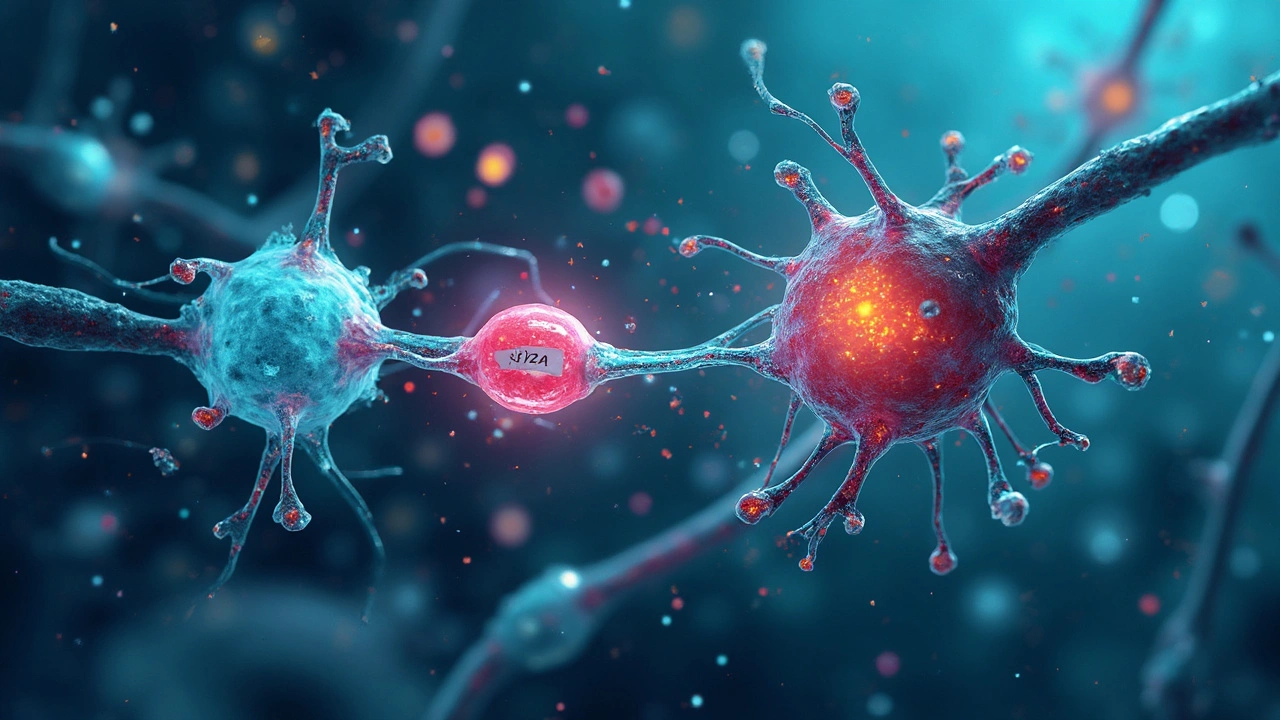Levetiracetam Mechanism of Action: Understanding How It Controls Seizures
If you or a loved one are dealing with epilepsy, you've probably heard of levetiracetam. But how exactly does this medication work inside the brain to keep seizures in check? Let’s break it down in simple terms.
Levetiracetam is an anticonvulsant, meaning it helps prevent or reduce the frequency of seizures. Unlike some older medications that change a broad range of brain activities, levetiracetam has a unique way of calming down the nerve cells that get overexcited during seizures.
What Happens in the Brain During Seizures?
During a seizure, certain neurons in the brain fire off electrical signals too quickly and all at once. This overload can cause the symptoms we recognize as a seizure — from muscle twitching to loss of consciousness. Levetiracetam steps in to help tone down this excessive activity.
How Does Levetiracetam Work?
Levetiracetam attaches to a specific protein on the nerve cells called SV2A (synaptic vesicle protein 2A). Think of SV2A as a switch that controls how neurotransmitters — the chemicals sending signals between brain cells — get released. By binding to this protein, levetiracetam helps regulate the release of these chemicals, preventing the nerve cells from firing too rapidly or chaotically.
Because it targets SV2A specifically, levetiracetam tends to have fewer side effects compared to older seizure meds that affect many parts of the brain. This selective action helps stabilize brain activity without dulling overall brain function.
Doctors often choose levetiracetam for its effectiveness across different types of seizures, including partial onset and generalized seizures. Plus, it’s well-tolerated and has fewer interactions with other medications.
Remember, every patient is different. While levetiracetam works well for many, your doctor will tailor treatment to your needs and monitor how well the medication is controlling your seizures. Keep an open line with your healthcare provider about any changes or concerns.
Understanding the mechanism behind levetiracetam can give you confidence in how it helps manage epilepsy. It’s not just about stopping seizures — it’s about restoring balance in brain communication to keep you safe and well.
Levetiracetam Synaptic Vesicle Protein 2A Mechanism for Medical Students
Wondering how levetiracetam calms down seizures without messing around with all the classic neurotransmitters? This deep-dive lays out what really happens at the synapse—focusing on how synaptic vesicle protein 2A (SV2A) fits in, what happens downstream, and why this weird molecule is an antiepileptic star. You’ll get relatable metaphors, practical examples, key facts, and direct links to essential further reading. Perfect for a medical student who wants clarity without info overload—everything you need to master levetiracetam’s mechanism of action.
About
Health and Wellness

